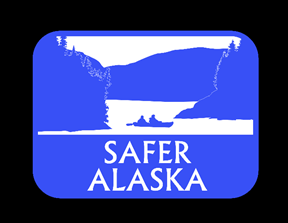2018 Recreational Season Monitoring Complete for Ketchikan Beaches
For immediate release — September 18, 2018
Contact: Gretchen Pikul, Division of Water, 907-465-5023, gretchen.pikul@alaska.gov
Juneau, AK — The Department of Environmental Conservation (DEC) has completed the 2018 Ketchikan BEACH Monitoring Program for coastal areas in Ketchikan, Alaska. A full report on 2018 monitoring will be available by the end of the year. Bacteria monitoring is planned for 2019 to help further determine bacteria sources, and to support the development of solutions and implementation of bacteria source reduction measures within Ketchikan.
Enterococci levels continue to exceed the recreational standards at several beaches:
- South Point Higgins,
- Thomas Basin,
- Rotary pool,
- Mountain Point (cultural foods location), and
- Herring Cove.
DEC recommends that when swimming in these areas, people should shower after contact with the water. Fecal coliform bacteria levels were above state limits protecting consumption of raw fish and shellfish at five beaches (Shull, Sunset, Seaport, Mountain Point cultural foods, and Herring Cove). When fishing in these areas people should rinse fish/marine foods with clean water and cook seafood to a minimum internal temperature of 145 degrees Fahrenheit to destroy pathogens.
Enterococci and fecal coliform bacteria can come from any warm blooded animal, including birds, seals, and dogs, as well as humans. Potential sources of these bacteria in Ketchikan may include wildlife and pet feces, human waste from private and municipal treatment systems, sewer line leakage, and/or boats in harbor areas. Contact with water impacted by enterococci or fecal coliform bacteria may cause stomach aches, diarrhea, or ear, eye, and skin infections.
As part of a statewide recreational beach monitoring program, marine water samples have been collected weekly from May 17 to September 12 at the 11 beaches listed below. The 2018 monitoring location maps and an analytical data results table are available on the Alaska BEACH Grant Program Website; the 2018 monitoring report will be posted on the website in late 2018.
Beaches monitored this season include:
- Knudson Cove (16 miles north of Ketchikan, near Clover Pass)
- Beacon Hill (off of North Point Higgins Road)
- South Point Higgins Beach (on Port Higgins)
- Shull Road (south of Whipple Creek)
- Sunset Beach (south end of Mud Bay)
- Refuge Cove Beach (south end of Refuge Cove Beach State Park)
- Thomas Basin (Stedman Street Bridge, mouth of Ketchikan Creek)
- Seaport Beach (near Saxman)
- Rotary Beach, pool and beach locations (also known as Bugges Beach, south of Saxman)
- Mountain Point, Cultural Foods and Surprise Beach locations (near Mountain Point boat launch)
- Herring Cove Beach (north end of Herring Cove)
The beach sampling program has completed a second year of monitoring, and is funded by the Environmental Protection Agency’s Beaches Environmental Assessment and Coastal Health (BEACH) Act grant program and implemented by DEC. It is part of a nationwide effort to decrease the incidence of water-borne illness at public beaches.
Since 2002, the Alaska’s BEACH Program has been monitoring recreational beaches throughout the state, including other communities in southeast Alaska: Douglas Island, Haines, Juneau, Petersburg, and Wrangell. Sample results have not shown persistent elevated levels of bacteria in these communities. For more information about the Alaska beach monitoring program, visit the Alaska BEACH Grant Program Website.


 Indicates an external site.
Indicates an external site.